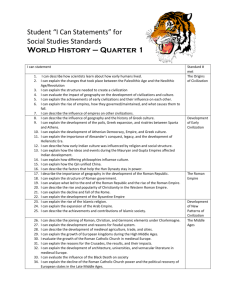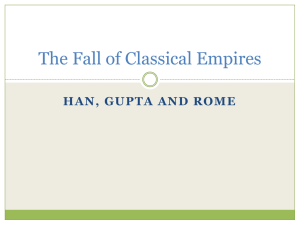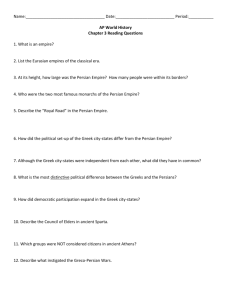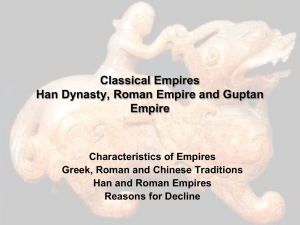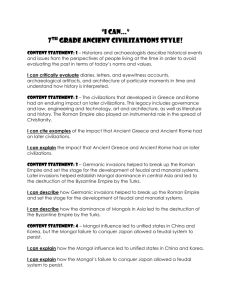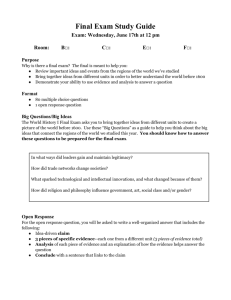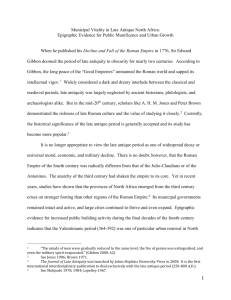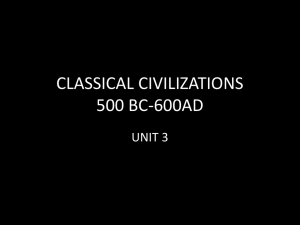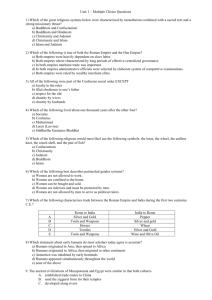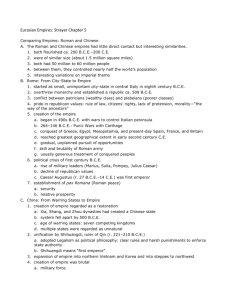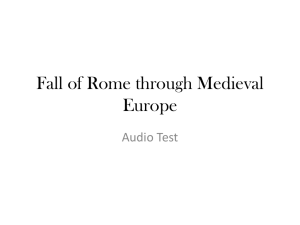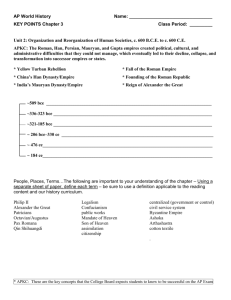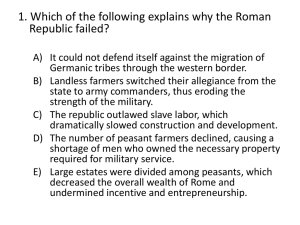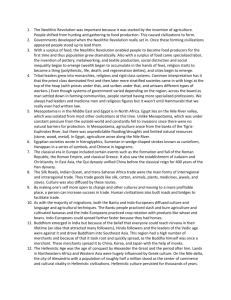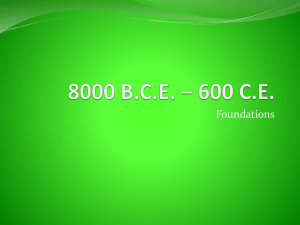Rome and Han Dynasty Comparison Activity
advertisement
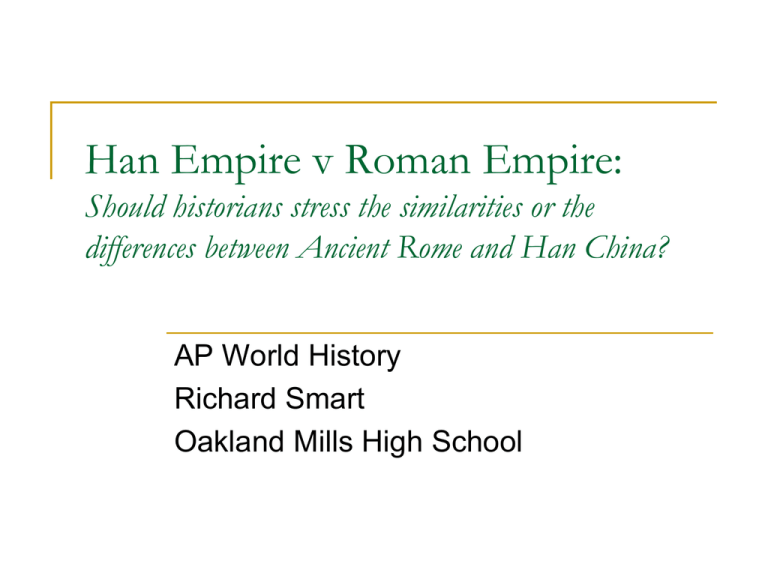
Han Empire v Roman Empire: Should historians stress the similarities or the differences between Ancient Rome and Han China? AP World History Richard Smart Oakland Mills High School Warm up List the similarities between teenagers and children. List the differences between teenagers and children. Which are more important to our understanding of young humans in the USA? What determines significance? Task Read through the cards and identify the similarities and differences. Place the cards on a continuum from most significant to least. What commonalities do you see in the cards at different positions on the spectrum? Identify your conclusions. Both the Roman Empire and the first Chinese empire arose from relatively small states that, because of their discipline and military toughness, were initially able to subdue small and quarreling neighbors. Ultimately they unified widespread territories under strong central governments. In China the imperial tradition and the class structure and value system that maintained it were eventually revived, and they survived with remarkable continuity into the twentieth century C.E. In Europe, North Africa, and the Middle East, in contrast, there was no restoration of the Roman Empire, and the later history of those lands was marked by great political changes and cultural diversity. Christianity was essentially unwilling to come to terms with pagan beliefs. The spread of Christianity through the provinces during the Late Roman Empire constituted an irreversible break with the past. On the other hand, Buddhism, which came to China in the early centuries C.E. and flourished in the post-Han era, was more easily reconciled with traditional Chinese values and beliefs. Roman rulers were likely to be chosen by the army or by the Senate; the dynastic principle never took deep root; and the cult of the emperor had little spiritual content. This stands in sharp contrast to the clear-cut Chinese belief that the emperor was the divine Son of Heaven with privileged access to the beneficent power of the royal ancestors. There was no Roman equivalent of Confucianism—no methodology of political organization and social conduct that could survive the dissolution of the Roman state. Although the Roman family had its own hierarchy and traditions of observance of the cult of ancestors was not as strong as among the Chinese, and the family was not the organizational model for Roman society and the Roman state. Both Empires had long borders located far from the administrative center and aggressive neighbors. Both had to build walls and maintain a chain of forts and garrisons to protect against incursions. The cost of frontier detense was staggering and eventually eroded the economic prosperity of the two empires. A network of cities and towns served as the nerve center of each empire, providing local administrative bases, further promoting commerce, and radiating imperial culture out into the surrounding countryside. Both empires found similar solutions to the problems of administering far-flung territories and large populations. In both empires a kind of civil service developed, staffed by educated and capable members of a prosperous middle class. Both empires spread out from an ethnically homogeneous core to encompass widespread territories containing diverse ecosystems, populations, and ways of life. Both brought those regions a cultural unity that has persisted, at least in part, to the present day. Agriculture was the fundamental economic activity and source of wealth in both civilizations. Government revenues were primarily derived from a percentage of the annual harvest. In both cultures the family was headed by an all-powerful patriarch. Strong loyalties and obligations bound family members. Values first learned in the family—obedience, respect for superiors, piety, and a strong sense of duty and honor— created a pervasive social cohesion.


